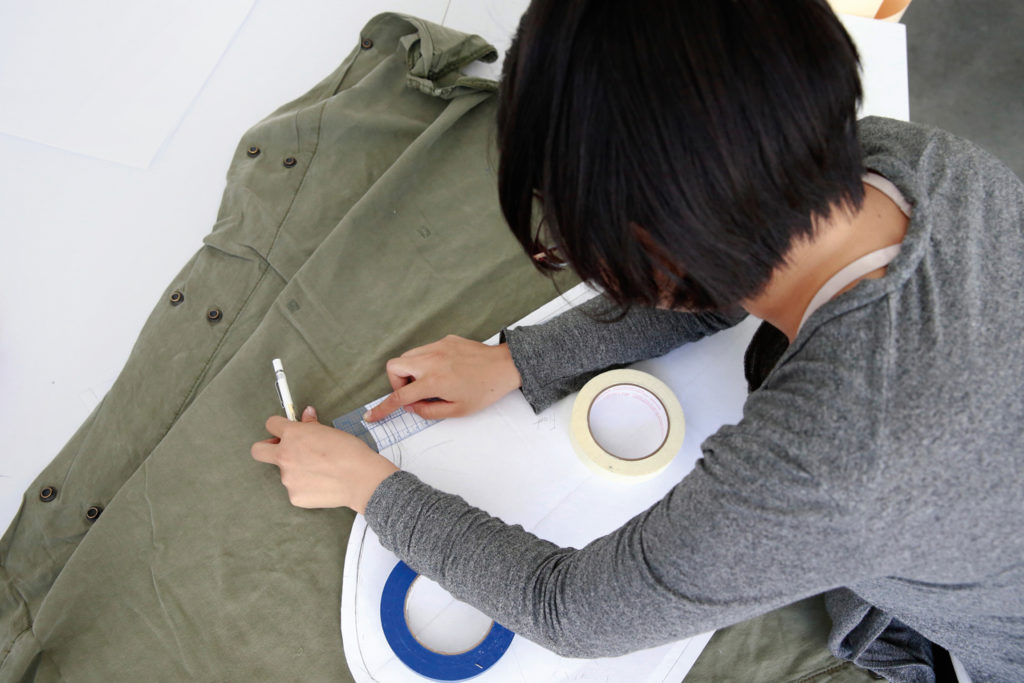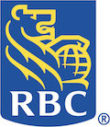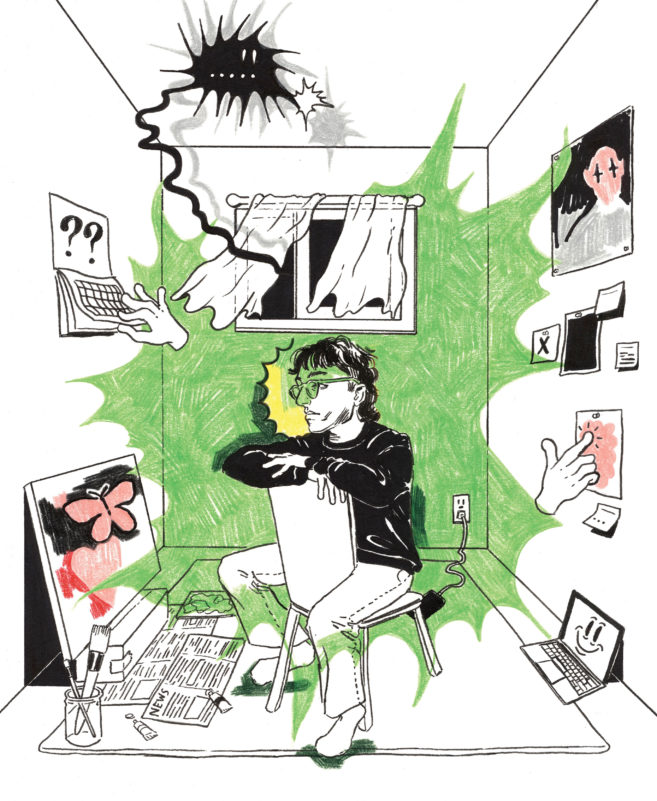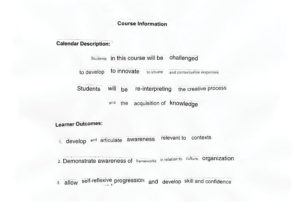Art school isn’t just for artists. What’s taught in any curriculum can only take you so far. Real-world knowledge and advice is key. And that’s the focus of this year’s art school guide: real arts grads talking about what’s worked for them—really—across careers in writing, architecture, craft, film, small business and more. Below, the first of four advice columns designed to help you choose, manage and complete a post-secondary education that will prepare you for the working world.
Use art school as a time to take some risks. “I feel like in art school it’s a pretty safe environment, so it’s a great place to try new techniques or new styles.” —Aisling Macken, textile conservator, National Maritime Museum; BFA, ACAD
Be aware that the major you start with may not be the major you end up with. “If you’re struggling in art school, maybe you’re not exactly in the area where you
should be. Maybe you’re in environmental design and you should be in industrial design. Or you’re in drawing but you should be in sculpture. You really have to explore. Or talk to other people around you, go to their classes, go in and watch them work. It may pique some interest in you.” —Matthew Hickey, architect, Two Row Architect; BDes, OCAD; M. Arch, University of Calgary
Respect and honour the learning style that works for you—and recognize learning can continue after graduation. “I had tried ceramics just a little bit in high school and university. Then a friend gave me a pottery wheel and I wanted to try it again. I wanted lessons, but not a class 8 or 12 weeks long. Then I found a makerspace that offered one-on-one lessons. The owner of the space would sit beside you on a wheel and she would hop on and help you whenever you needed it—that was the perfect structure for me.” —Janet Hinkle, BFA, York University
Creating art on your own terms, outside of school, could help you keep your motivation up while you are still taking structured classes. “The world is greater than what’s in school. During my master’s, which was about performance and composition, doing dance and music outside of that kept me more balanced.” —Jessica McMann, hoop dancer and performer; MFA, SFU
Take care of yourself, and remember that your art is not you. “In order to do their creative practice, art students need to take care of themselves—not just in their physical well-being but also mentally and emotionally…. For some students it really helps for them to build personal structure within an unstructured environment—managing their time, setting deadlines, incorporating breaks, putting aside time to feed yourself…. I think we are really pushing up against this culture of celebrating exhaustion, like, ‘I only got two hours of sleep and I’ve had five espressos today already.’ Some of us can do that but none should have to do that. We also really recommend learning to separate the person from the art practice—because it can be devastating in a critique if your identity is completely wrapped up with your art practice.” —Sarah Jo, student wellness coordinator, ECUAD; MA, UBC
Use the opportunities to work in your field through school placements. “Internships and co-ops were definitely my entry point to what I do now. I interned at Sotheby’s and at a commercial gallery, both for course credit. These very different experiences gave me the opportunity to build real relationships with individuals who went on to become really important members of my network, and helped me to understand what working in the field was like.” —Corrie Jackson, senior curator, RBC; MVS, University of Toronto
This post is adapted from the Canadian Art School Guide, published in our Winter 2020 issue, “Antimatter.” To read the full guide, download the PDF.

 Emily Carr University of Art and Design summer class. Photo: Jeff Vinnick/ECUAD.
Emily Carr University of Art and Design summer class. Photo: Jeff Vinnick/ECUAD.







